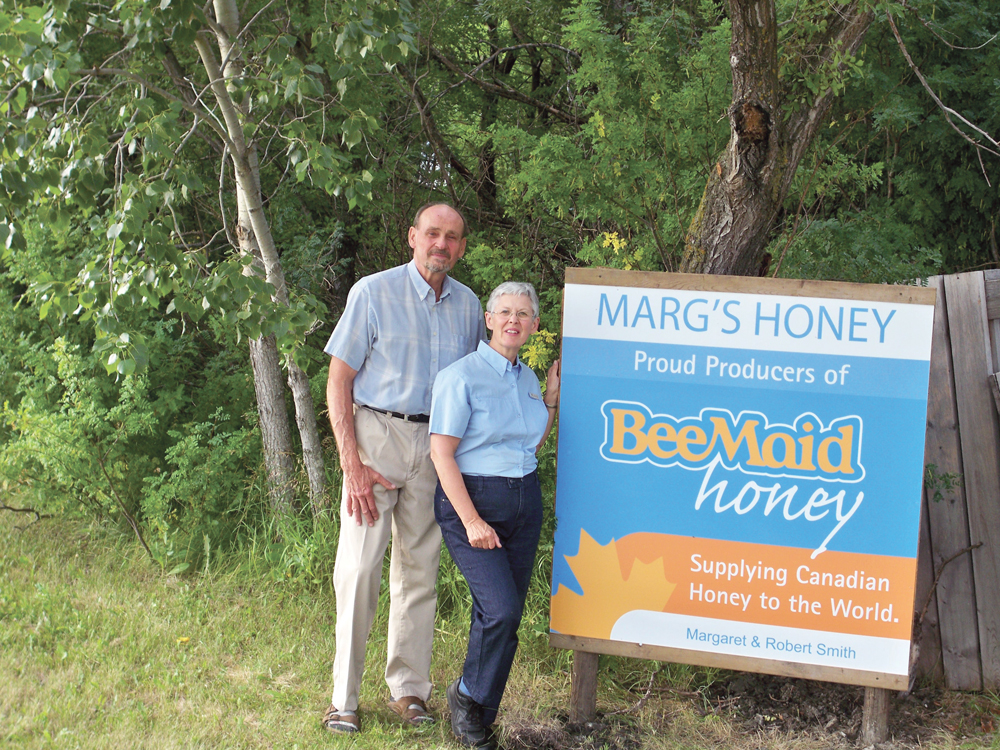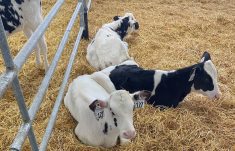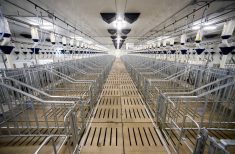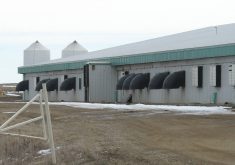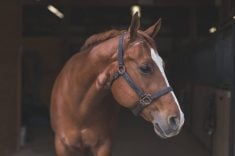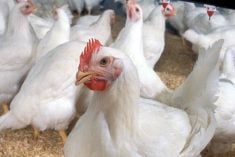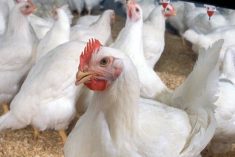Manitoba farmers are giving a program aimed at improving on-farm food safety and animal welfare a strong passing grade.
Producers who have participated in Growing Forward 2’s On-Farm Food Safety and Animal Welfare say they’d do it again, noting it cost shares improvements that help farmers.
“If you have the chance to get involved with this program, do it. It will only strengthen your operation,” said Margaret Smith, who alongside her husband Robert has been running a honeybee operation near St. Andrews since 1977.
They started using the program about 10 years ago, when it first became available under the original Growing Forward framework.
Read Also

Beekeepers want financial protection against tropi mite
Tropilaelaps (tropi) mites haven’t landed in Canada yet; beekeepers want to know they’ll get federal financial help if the deadly bee parasite ever does
“We got in on the honeycomb replacement program and we did that over time. Growing Forward gave us the first bunch and then we were able to take advantage of more in Growing Forward 2,” Smith said. “The comb exchange program has just really helped us. We were able to buy new foundations and new frames. If you have a chance to exchange a lot of old stuff out of your system and get some new stuff in, you’ve got happy bees.”
Through Growing Forward 2, the federal and provincial governments have invested $1.2 million in 275 projects to help producers improve biosecurity measures, traceability, food safety, quality and animal welfare practices.
“We have always gone to conferences and have been reading constantly, so when they were talking about this program, we thought this is something that we could really do to make things better in our operation,” Smith said.
This year’s program assisted with 50 honeybee-related projects, such as queen honeybee rearing equipment and training, bee cell sampling, separating or sorting equipment, participation in a honeycomb exchange program, and assistance in acquiring new microscopes.
The Smiths were also able to acquire a new microscope through the program, which has enabled them to identify bee disease and pests right on the farm.
“In terms of having the microscope here, although we haven’t mastered it, it has made it possible to identify things here that we would have had to send to the National Bee Lab, which takes awhile to get any answers back,” Smith said. “Being able to see what might be present has certainly improved the health of the bees, which makes things much easier. They produce better and they overwinter better.”
Livestock benefits
The program has also assisted 141 livestock producers move forward with animal welfare projects, such as purchasing and installing low-stress handling equipment, adding non-slip flooring and stall enhancements.
“This is the first year animal welfare projects were included in the program and the response from Manitoba farmers was extremely positive,” said Ralph Eichler, Manitoba’s minister of agriculture. “Manitoba farmers continue to be innovators and leaders when it comes to biosecurity, assurance systems, animal care and food safety. We are proud to support their good work with funding from this program.”
Environmental monitoring inside poultry barns was also included in the program’s animal welfare stream, something Rachel Brown says has been a huge boost to her operation.
“My Growing Forward project was that we enhanced our animal welfare surveillance,” Brown said. “The health and welfare of our animals is on our minds all of the time and I think that most producers are the same way.”
Brown is a turkey producer who farms near Gunton, Manitoba. She had camera surveillance installed in her barns this past summer and now has the ability to check in on barn activity any time on her mobile device.
“It really allows you to alleviate any issues that may arise as well as do flock surveying when you aren’t home,” Brown said. “It definitely gives us more peace of mind when we are off the farm that everything at home is OK, and that is always a nice thing to have when you have live animals.”
She adds that having the cameras has also given the farm an added level of security when it comes to biosecurity, enabling her to see who has been in the barn and if proper measures were taken.
“There is a lot of biosecurity protocol that is in place but we are not always, always home and we don’t know if someone has been here. So this will tell us if someone has, if the protocol has been broken and then we are able to take the steps to rectify that,” Brown said.
The ability to monitor the animal’s behaviour from afar can also give insight into the presence of predators or failed equipment.
Application process
Both Smith and Brown say the program application process was user friendly and gives producers the ability to cut costs on projects that will benefit them on a daily basis.
“We know what we want and we know our farm better than anyone else so we know what will work the best in our situation and this program is really designed so that the producer can have flexibility to decide what they want for their farm,” Brown said. “It is a good cost-sharing program that is user friendly and really helps producers.”
Jordan Templeton, program officer with Manitoba Agriculture for the On-Farm Food Safety program says that Manitoba Agriculture does a lot of pre-program work with commodity groups to ensure the program is realistic and benefits producers on the ground.
“We try to stay close to the current issues in the industry, what producers are actually needing and where there may be gaps in food safety or animal welfare. We use that type of knowledge to develop our catalogue, so that we can offer funding that will assist producers in meeting the growing demands of the industry,” Templeton said.
This year, producers across the province have shown an overwhelming response to the program, eating up the program’s entire two-year budget in 2016.
“The On-Farm Food Safety is by far the highest-volume program that we have,” Templeton said. “We had a huge intake on February 1, 2016 and basically fully allocated our full budget for this year and next year. We had over 500 applications come in, which is double what we were expecting.”
Manitoba Agriculture has allocated all of the funds that are currently available for this program, which ends in March 2017.
“Whenever the next policy framework is, that is when we would begin to direct producers about a future intake. I would imagine we would have some information by the end of 2017, but at this point in time, I don’t know what that is going to look like.”
Producers are hopeful the next round of policy framework, Growing Forward 3, will include more funds for this program.
“Our experience with this program has been excellent. I am really excited to hear some of the possibilities that are coming down the tubes for Growing Forward 3,” Smith said.


